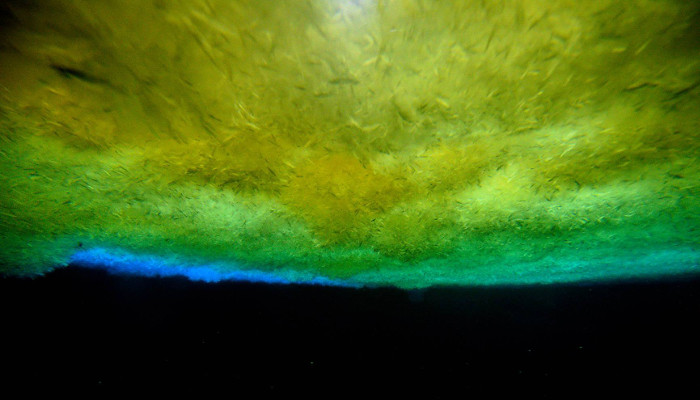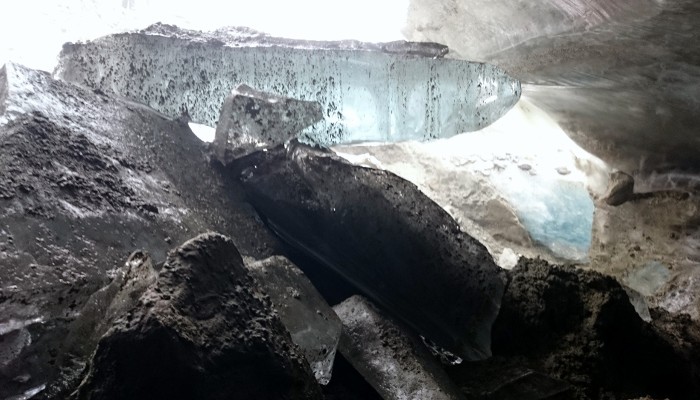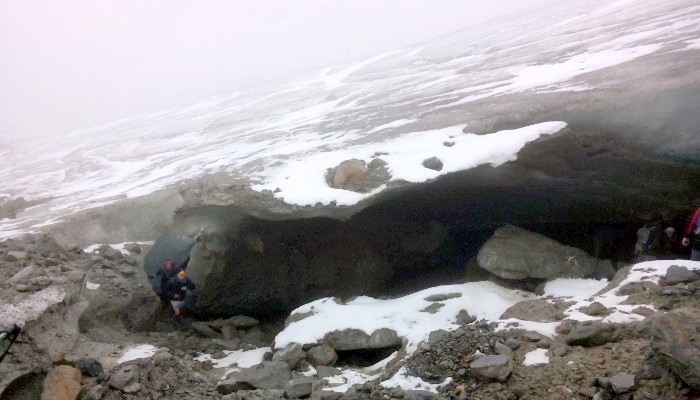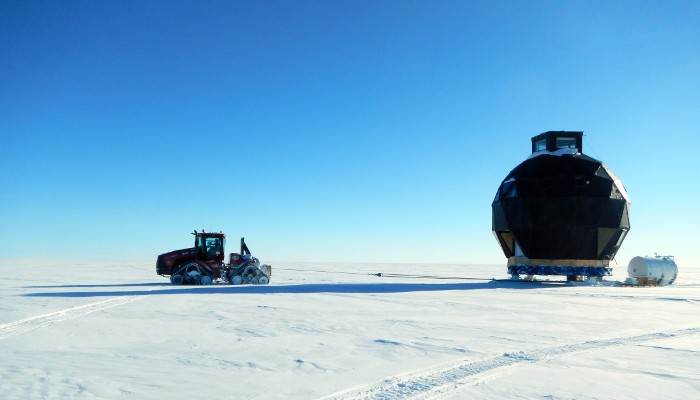Always wondered how it looks like under the sea ice? Getting an answer is simpler than you might think: Just go out to the front of McMurdo ice shelf in Antarctica and drill a tube into the sea ice. Then let people climb down and take pictures of the ice from below. More information: – Photo taken by Marcus Arnold, Gateway Antarctica, University of Canterbury during his November 2015, Antarc ...[Read More]
Image of the Week: Greenland Glacier Seen from a Drone
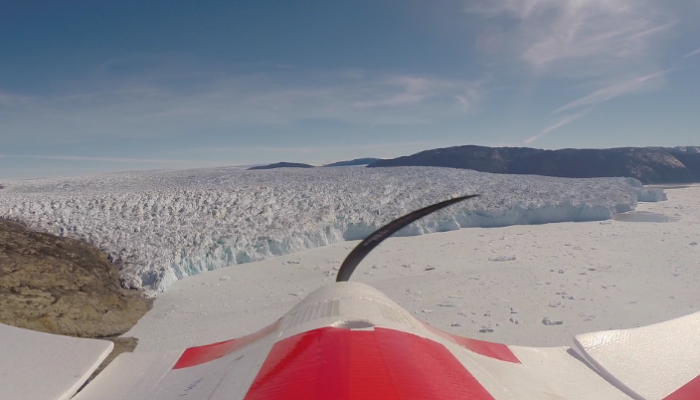
The use of drones or Unmanned Aerial Vehicles (UAVs) is one of the most exciting development in glaciology in recent years. The picture was taken during fieldwork conducted in the summer of 2014 by Johnny Ryan and colleague Nick Toberg. The aim was to survey Store Glacier once a day using a fixed-wing UAV, that was equipped with a digital camera, which took photos every two seconds during its dang ...[Read More]
Image of the Week : 63 years of the Muir Glacier’s retreat
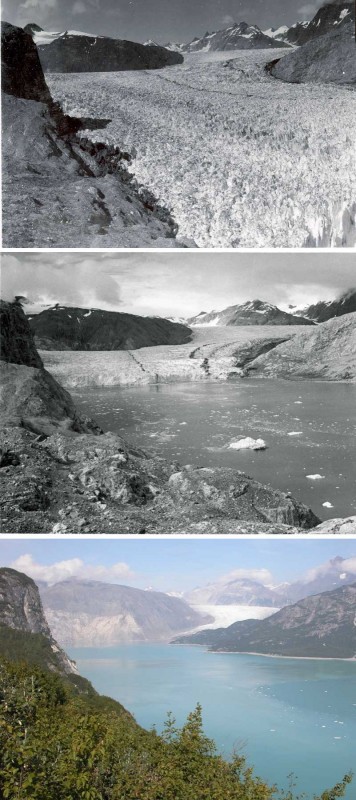
The Muir is a valley glacier (Alaska) that has significantly retreated over the last 2 centuries. The 3 pictures have the same field of view and record the changes that occurred during the 63 years separating 1941 and 2004. In the 1941, the terminus of the glacier is on the lower right corner of the photo. The Muir is then a tidewater glacier up to 700m thick and is well connected to its tributary ...[Read More]
Image of Week: Inside the Greenland Ice Sheet
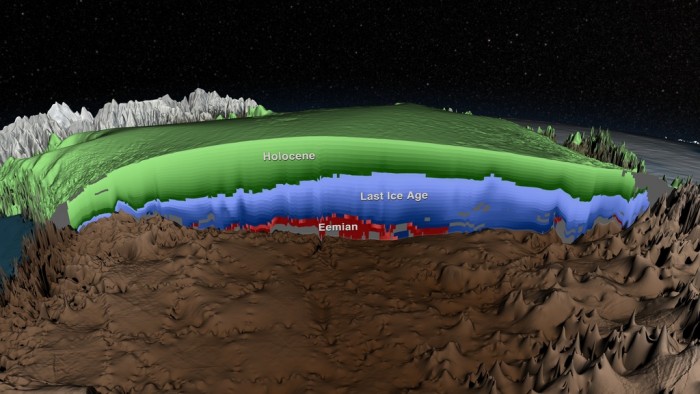
The image shows a cross section of the Greenland Ice Sheet, where a recent study by MacGregor et al. have mapped the layers imaged by radar. Thanks to ice core measurements the age of the layers have been determined, and in the image the layers from the Holocene period (the past 11.700 years) are shown in green. The ice formed during the last ice age, that spanned 11.700 to 115.000 years ago are c ...[Read More]
Image of the Week: Under a Glacier
What is happening under a glacier? This is a difficult questions to answer as accessing the glacier bed is usually not that easy. Here, we are getting a rare glimpse of the different processes and materials that are often found at the ice-bed interface. The photograph shows both sediments and hard rock, clear ice and dirty ice, and of course flowing water. No wonder these processes are complicated ...[Read More]
Image of the Week: Hochjochferner
The margin of the glacier “Hochjochferner” on the border between Austria and Italy. This glacier has been monitored with an Automatic Weather Station for several years by the Institute for Marine and Atmospheric research in Utrecth, NL.It is also the destination of the field trip that takes place during the annual Karthaus summer school in ice and climate. Here, students are exploring ...[Read More]
Image of the Week: GISP II Borehole
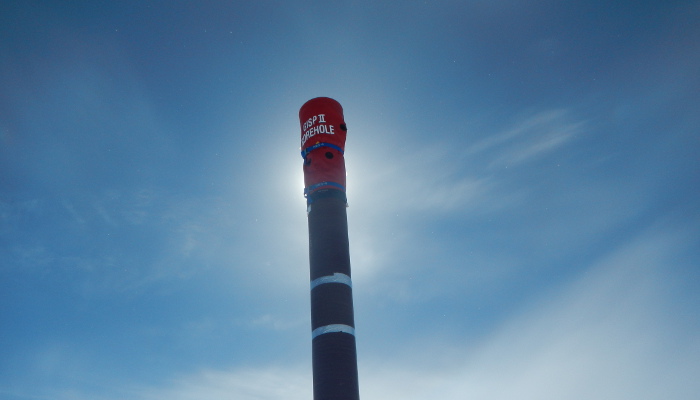
Climate records from ice cores have helped scientists understand the past changes in climate.The GISP II (Greenland Ice Sheet Project Two) ice core was more than 3km long and was drilled during a five year period in the 1990s. After the drilling ended the casing of the borehole was extended above the surface, so that the borehole can still be accessed for remeasurements of, for example, temperatur ...[Read More]
Science and Shovels: Traversing across the Greenland Ice Sheet.
Moving 150 tonnes of equipment more than 450km across the Greenland Ice Sheet sounds like a crazy idea. In that context, moving a 14-metre high, dome-shaped, wooden structure seems like a minor point, but it really is not. I do not think I realised what an awesome and awe-inspiring project I was part of, until I was out there, in the middle of the blindingly white ice sheet, and I saw the enormous ...[Read More]
From the Poles to Paris — An interview with Erlend Moster Knudsen
What do polar bears and emperor penguins have to do with the Eiffel Tower and Notre Dame? Pole to Paris has the answer. Erlend Moster Knudsen earned his PhD in climate dynamics after four years of research from the University of Bergen, Colorado State University and University of Alaska Fairbanks on Arctic sea ice and its interaction with atmospheric circulation. He took some time to answer ...[Read More]
Young Scientist Events at the EGU General Assembly
Are you going to the EGU General Assembly in Vienna next week? Check out these events for young scientists (YS). Short courses The idea behind the young scientist short courses is to give an insight into a certain area and/or the applications/uses/pitfalls in and around the topic. There are a lot of very interesting courses at this year’s meeting. I would like to highlight two short courses in par ...[Read More]

